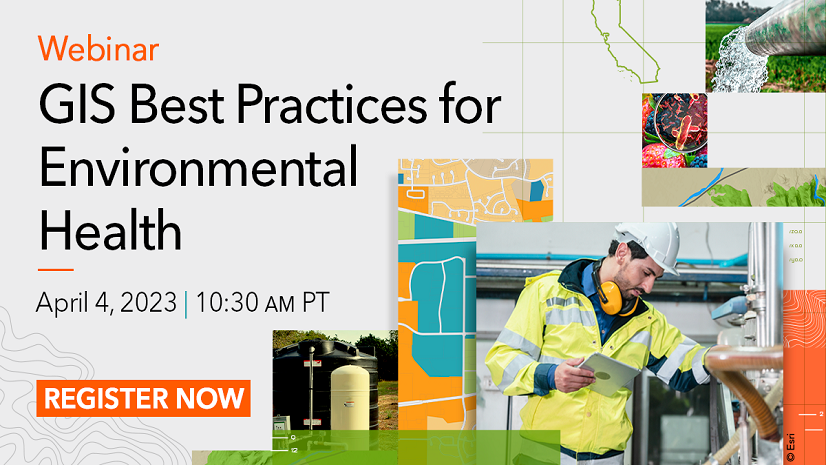Despite being often associated with tropical and subtropical regions, mosquito-borne diseases pose an escalating threat to the United States, intensified by rising temperatures due to climate change. The West Nile virus may be the most spread disease by mosquitoes in the U.S., but there are over a dozen other viruses and parasites with the potential to cause sickness and even death.
This National Mosquito Control Week, I’d like to share some modern geographic information system (GIS) tools and strategies to combat these deadly vectors because part of this battle is inherently geographic.
Personal Journey: The Intersection of Public Health and Mosquito Control
My journey into the world of mosquito control began during my Master of Public Health program in 2005-2006. My first ever GIS project involved examining the impacts of pesticides used for mosquito eradication on the public’s health. The objective? To determine whether the cure (pesticide exposure) was worse than the disease (West Nile virus).
By leveraging GIS, I estimated the population-level exposure to aerial pesticide spraying. My research concluded that despite its widespread usage, pyrethrin pesticides did not pose significant harm to populations, a finding of critical importance for public health (you can read my paper here).
Later, after joining Esri, I was part of a team that utilized GIS to predict Aedes mosquito habitats – the vectors for the Zika virus. ArcGIS’s predictive analysis tools allowed us to consider the mosquitoes’ preferred temperatures, precipitation, and elevation ranges. The resulting map of potential habitats, when overlaid with demographic information, helped us identify areas with the highest numbers of women of childbearing age at risk during the Zika crisis. These are the places, we hypothesized, that should be prioritized for mosquito control measures (see the paper and habitat maps here).
Though I have always found this work to be relevant and meaningful, I used to perceive it from an intellectual perspective rather than an emotional one. However, meeting Andy Laudick and hearing the harrowing story about his 4-year old daughter Leah’s battle with the La Cross virus truly personalized the severity of mosquito-borne illnesses for me (you can listen as Andy tells his story on the CDC website).
These experiences compel me to emphasize the critical importance of our nation’s ongoing efforts to eradicate these deadly insects and the diseases they carry during this National Mosquito Control Week.
GIS: A Modern Approach to Mosquito Control
GIS technology has significantly transformed mosquito control strategies by enabling the visualization and analysis of geographical data, thereby providing valuable insights into mosquito population dynamics and disease transmission patterns. This allows for targeted control efforts and efficient resource allocation.
For instance, the District of Columbia Department of Health employed GIS to understand the spatial relationships and the environmental and social factors associated with areas potentially harboring harmful, virus-carrying mosquitoes. This improved their targeting strategy for mosquito control. Similarly, the City of Columbus Public Health uses GIS to map mosquito population density and trapping locations each June as part of their West Nile virus monitoring efforts.
The Puerto Rico Vector Control Unit uses GIS to plan and coordinate weekly maintenance, conduct vector control activities, and educate residents. And dozens of others use GIS to create risk maps, proactively identify mosquito breeding sites, assess population risks, and improve the success of their mosquito control initiatives.
There are many opportunities to leverage geography and GIS to battle mosquitoes. Esri provides ready-to-use solutions for the most common needs in mosquito control, including service requests, treatments, and surveillance. If you’re already using ArcGIS, you can download and start implementing these tools immediately.
The Path Ahead
During National Mosquito Control Week, we must remember that our fight against mosquitoes extends beyond the inconveniences they cause at our summer barbecues. It’s about protecting lives. Every measure we undertake to understand and mitigate the risks of mosquito-borne diseases has far-reaching implications for the health and well-being of individuals and communities globally.
Public health departments play a crucial role in this battle, working tirelessly behind the scenes to protect us from these tiny yet deadly creatures. We extend our gratitude to them and affirm our commitment to providing cutting-edge tools to aid their endeavors.
As we grapple with the dual challenges of mosquito-borne diseases and climate change, leveraging innovative technologies like GIS to map, comprehend, and counteract these deadly vectors is more vital than ever. Together, we can pave the way for healthier, safer futures.
For more information about how Esri can support your mosquito control program, please contact healthinfo@esri.com.




